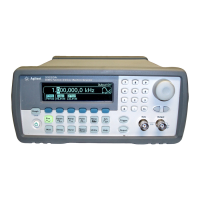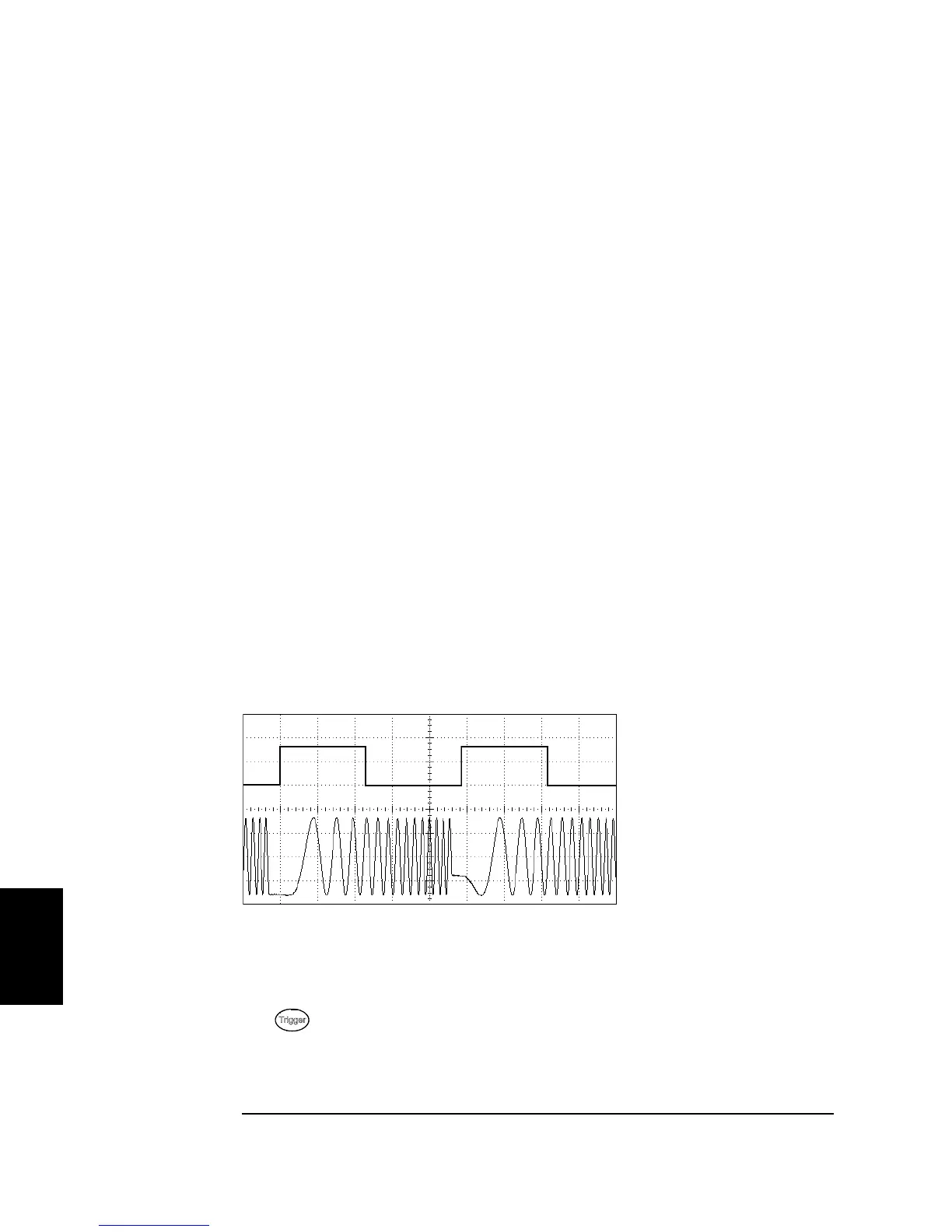342
Chapter 7 Tutorial
Frequency Sweep
7
Frequency Sweep
Frequency sweeping is similar to FM but no modulating waveform is use
d.
Instead, the function generator sets the output frequency based on either
a linear or logarithmic function. In a linear sweep, the output frequency
changes in a constant “hertz per second” manner. In a
logarithmic
sweep
,
the output frequency changes in a constant “octaves per second” or
“decades per second” manner. Logarithmic sweeps are useful for covering
wide frequency ranges where resolution at low frequencies could be lost
with a linear sweep.
You can generate a sweep using an internal trigger source or an
external hardware trigger source. When the internal source is selected,
the function generator outputs a continuous sweep at a rate determined
by the sweep time specified. When the external source is selected,
the function generator will accept a hardware trigger applied to the rear-
panel Trig In connector. The function generator initiates one sweep each
time Trig In receives a TTL pulse.
A sweep consists of a finite number of small frequency steps. Since each
step takes the same amount of time, longer sweep times result in smaller
steps and therefore better resolution.
The number of discrete frequency
points in the sweep is automatically
calculated by the function generator
and is based on the sweep time you select.
Frequency Sweep
For triggered sweeps, the trigger source can be an external signal,
the key, or a command received from the remote interface.
The input for external trigger signals is the rear-panel Trig In
connector.
This connector accepts TTL-compatible levels and is referenced
to chassis
ground (not floating ground). When not used as an input, the Trig In
Sync Output
Main Output

